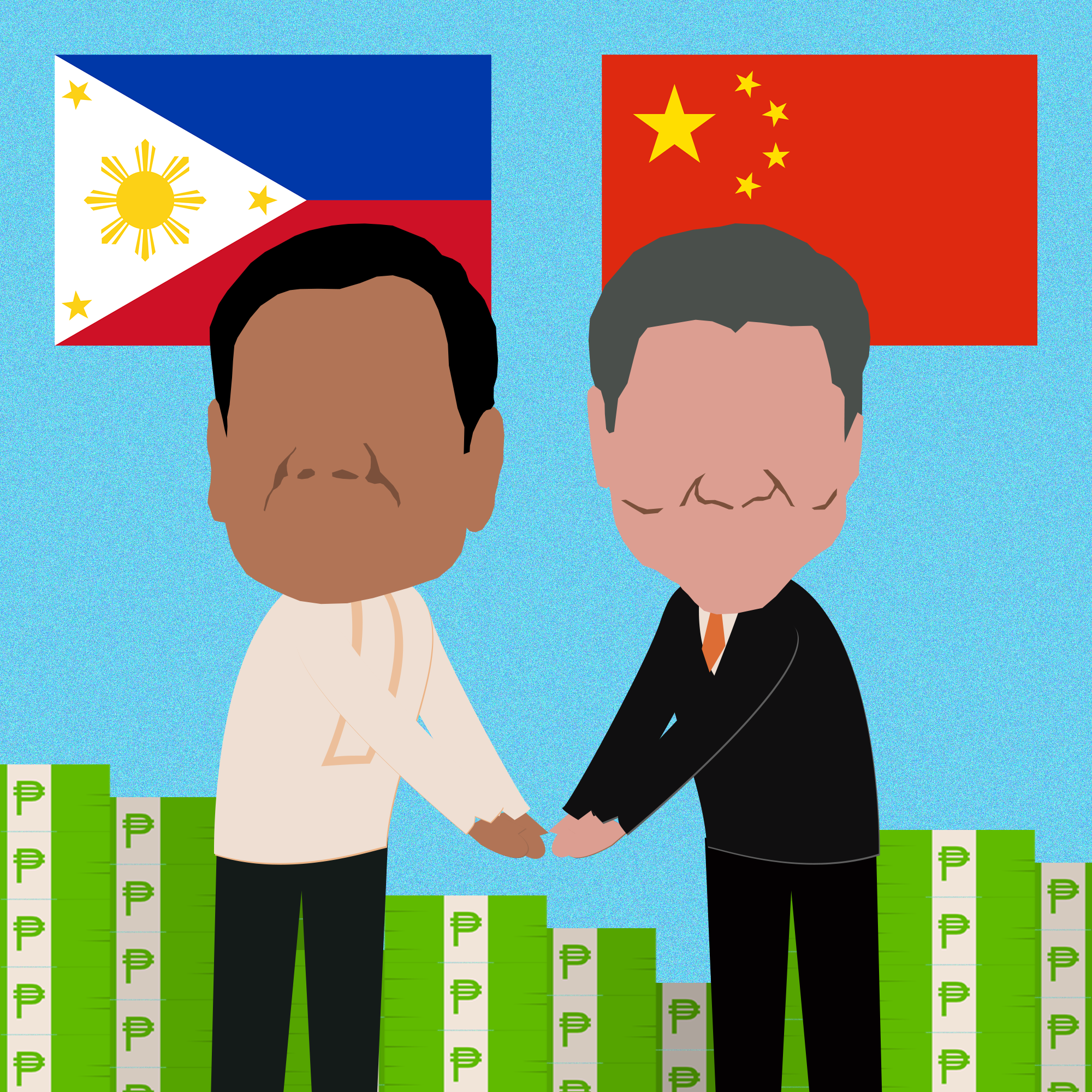The Marcos administration was notorious for world-beating cronyism and corruption. But this is not enough to fully explain the worst economic collapse in Philippine history and continued decline long after the dictatorship was overthrown.
The neoliberal policies started under the duress of Martial Law combined with the massive debt willingly lent by creditors and political upheaval to cause the severe economic crisis in the waning years of the regime. The administrations that followed kept up the momentum of destructive “free market” reforms and economic troubles. Martial Law did not just keep Marcos in power but was also used for the neoliberal restructuring of the economy.
What really caused our “lost decades” of development, and keeps us a laggard of the region today?
1. Under Marcos, the Philippines became the first country in Asia and second in the world after Turkey to be at the receiving end of the World Bank’s structural adjustment loans (SAL). Local industries were stripped of protection and weakened. Import dependency heightened.
The SALs had strings attached: In 1979, the conditions of a US$200-million loan included tariff cuts, removal of import licenses and quantitative restrictions, lowering protections, and export promotion to “restructure” the economy. These were the same conditions for a US$302-million loan in 1984.
The Marcos regime took away tariff barriers and protections which worsened import dependency. Tariffs were narrowed from 0-100% to 0-50%, hurting whatever domestic industries there were in 14 sectors including food processing, textile and garments, leather and leather products, pulp and paper, cement, iron and steel, and automotives.
Overall average nominal tariffs fell from 44.3% in 1975 to 27.6% in 1985. Agriculture tariffs were pulled drastically down from 67.2% in 1975 to 35.9% in 1985, and manufacturing from 41.4% to 27.1% in the same period.
The share of domestic production to gross domestic product (GDP) plunged. Manufacturing’s share fell from a peak of 29.1% of GDP in 1974 to 24.8% in 1986. Agriculture’s share fell from 24.7% of GDP to 24.6% in the same period.
This worsened import dependency. Under the Marcos administration the balance of trade reached its worst in 25 years at -6.9% of GDP in 1975 and then -6.6% in 1983. Chronic trade deficits have remained since then and have only been covered up by the bloating of cheap labor export and overseas Filipino worker remittances.
2. Marcos aggressively facilitated foreign plunder of Philippine resources.
The Marcos administration devised the service contract scheme that bypassed Constitutional restrictions on foreign exploitation of Filipino petroleum and gas resources. This led to the complete turnover of Malampaya resources to foreign oil and gas giants Royal Dutch Shell and Chevron.
Marcos also gave foreign capital profitable opportunities by enacting laws on investment and export incentives to foreign investors. The export processing zones (EPZ) he started are the precursors of the hundreds of special economic zones (SEZ) nationwide today.
3. Real wages were cut between 1970 and 1975 and didn’t increase until after 1986.
The value of real wages of Filipinos employed in agriculture plunged 14.3% from Php34 to Php29 between 1965 and 1986, measured at constant 2018 prices, according to data compiled by the Martial Law Museum. Wages in low-paying jobs fell even more by 72.6% from Php84 to Php23, and of skilled workers by 68.7% from Php113 to Php35 in the same period. Cheap wages are among the tenets of neoliberalism.
4. Marcos institutionalized cheap labor export.
Marcos’ Presidential Decree 442 or the 1974 Labor Code started a recruitment and placement program to deploy Filipino workers to overseas labor markets. The measures put in place for the first time then are all too familiar today – public and private recruitment offices for sending workers abroad, setting-up funds to facilitate overseas Filipino workers’ (OFW) insurance and assistance, and remittance schemes. Wave upon wave of OFWs were hired in the Middle East and as seamen.
5. International Monetary Fund (IMF)-enforced fiscal austerity ensured foreign debt repayments. The peso devalued and prices hiked.
Under Marcos, debt increased fifty-fold from US$599 million in 1965 to US$28.3 billion in 1986 especially to fund his “Golden Age of Infrastructure” and the enormous kickbacks that came with this. The peso’s value against the dollar plummeted from Php3.91 in 1965 to Php19.03 in 1985. Inflation soared and the prices of goods which only increased by half between 1965 and 1965 (64% increase) more than quadrupled between 1975 and 1986 (358%).
Corruption, cronyism and debt greatly contributed to the country’s economic problems especially since the last years of the Marcos dictatorship. Corruption and cronyism kept enterprises inefficient, while mounting debt servicing drained the government and the economy’s finances. The lingering crisis and “lost decades” after were however most of all from how neoliberal policies wrought havoc on the country’s production sectors.
The US-dominated IMF-World Bank and transnational commercial banks willingly lent to the dictatorship knowing how this was going to the Marcoses, his cronies, and grand-scale corruption. They knew that this debt would be fully repaid – as immediately affirmed by the subsequent Corazon Aquino government – and supported the neoliberal restructuring of the economy by the Marcos regime.
There was clearly no contradiction between neoliberalism and crony capitalism. The monopolies Marcos created for Cojuangco, Benedicto, Floirendo, Tan, Enrile, Alcantara and other cronies – in sugar, coconut, bananas, tobacco, logging, mining, telecommunications, banking, construction, vehicle, assembly, energy, shipping, pharmaceuticals, medical supplies, and elsewhere – were providing the raw materials, cheap labor, markets and investment outlets ever sought by monopoly capitalism.
The Philippines was dubbed the ‘sick man of Asia’ after the Marcos dictatorship, and it has not gotten any better as neoliberal policies only got worse.






